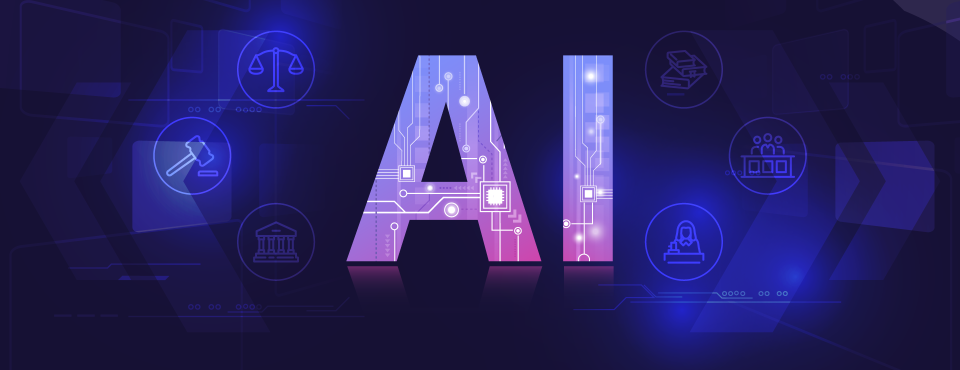A DC Circuit panel struggled with both the idea of granting copyright protection for AI-produced works and a computer scientist’s framing of his case to do so during oral argument Thursday.
Ryan Abbott of Brown Neri Smith & Khan LLP, the attorney for plaintiff Stephen Thaler, argued nothing in the law restricts nonhuman authorship and noted corporations can own copyrights. But the three-judge panel for the US Court of Appeals for the DC Circuit appeared dubious of his position and questioned whether Thaler properly raised an alternative theory that he created the work in question with his machine, rather than the theory in his copyright application and district court complaint that the machine was entirely responsible.
LISTEN: You Can Create Award-Winning Art With AI. Can You Copyright It?
“I’m getting profoundly confused by what your theory is here,” Circuit Judge Patricia A. Millett said.
The first federal appeals court battle over the boundaries of copyright law’s application to AI-generated works carries huge implications for creative industries given the rapid proliferation of the technology. The circumstances upon which copyright vests in work wholly or partly created by AI and who gets to control and enforce that right will hinge on interpretations of cases like Thaler’s.
The US Copyright Office refused to register Thaler’s two-dimensional art titled “A Recent Entrance to Paradise” because it was generated by a machine. Thaler sued the office, but the US District Court for the District of Columbia ruled against him. It found “courts have uniformly declined to recognize copyright in works created absent any human involvement,” citing cases where copyright protection was denied for celestial beings, a cultivated garden, and a monkey who took a selfie.
Thaler claims his AI-program created the image as a work for hire, or also that he owned it because no one else did and he possessed it. Abbott told the appeals panel Thaler raised his alternate theories in his motions for reconsideration and at the district court, but the court and Copyright Office didn’t acknowledge them.
Judge Robert L. Wilkins noted Thaler’s complaint in the district court asserted a registration should have been granted despite no human involvement. And Millett asked where in Thaler’s appeals briefing he challenged the district court’s finding that he waived his alternate theories by not raising them to the Copyright Office.
“You get to come here and argue to us that district courts made errors, but you have to raise them in your brief,” Millett said.
Ownership vs. Authorship
The judges said they were struggling to understand Thaler’s common property law theory for authorship—that he owns the work because he possesses the Al that created it. Millett pushed Abbott to clarify whether he was arguing that ownership counts as authorship.
“You just said because he owns it under common law, he possess it, and so he’s the creator, he’s the author of it,” she said.
“Possession is a basis for ownership,” Abbott responded. “One theory of unowned property is if the Al made an image that’s original and protectable and no one else owned it, then he owned it by first possession.”
Abbott presented a third argument for authorship, saying Thaler was the author of the work by virtue of building the machine and using it. Without that, the contested image would never have been created, he said.
“Building’s got nothing to do with it,” Millett said. “Kodak builds cameras, and so therefore they can be authors of pictures that someone takes with a Kodak camera?”
Nicholas Crown, the Justice Department attorney representing the Copyright Office, also defended the office’s reference to property rights when questioned by Millett.
The Copyright Office, in its brief, said the 1976 Copyright Act envisions humans as rightsholders partly because they can own property while machines cannot. But Millett pointed to the US Supreme Court’s 1892 opinion in Bedford v. Scribner, in which the court recognized a woman can hold a copyright without having personal property rights.
“It didn’t require someone who could have property rights in the 1800s, but it does now?” she said.
That holding wasn’t informative of the Copyright Act and Thaler’s case, Crown responded. Authorship is a human effort under copyright law, he said, and that’s at the heart of Thaler’s lawsuit—the presence of property rights is just one of many indications of human authorship.
The judges pressed Crown on what his interpretation of the Copyright Act might mean in the long run, with Wilkins asking him to respond to Thaler’s arguments that it would stifle innovation.
“Congress gets to set its policy choices in terms of where the proper incentives lie,” Crown said. “For purposes of this case, when that question’s not presented squarely here, when we have hotly contested issues in terms of Al and what the proper incentives should be for intellectual property, those are really questions for Congress.”
Millett questioned how an Al-generated work with more human engagement, such as controlling the “contours of what it wants made” or the “sources to which it points” could elicit a different analysis of human authorship.
The types of questions asked for a work with more human input might consider how the Al was trained and what kind of prompts were used, Crown said, adding that a lot would depend on the particulars of the case.
“In terms of this test case, the whole point is you don’t have to draw those lines,” he said. “There’s just an up down vote on whether you have to have some human involvement in creating the work.”
“We think the answer is yes,” he said, “for all the reasons we pointed out and as the district court explained.”
Circuit Judge Judith W. Rogers also sat on the panel.
The case is Stephen Thaler v. Shira Perlmutter, D.C. Cir., No. 23-5233, oral argument held 9/19/24.

